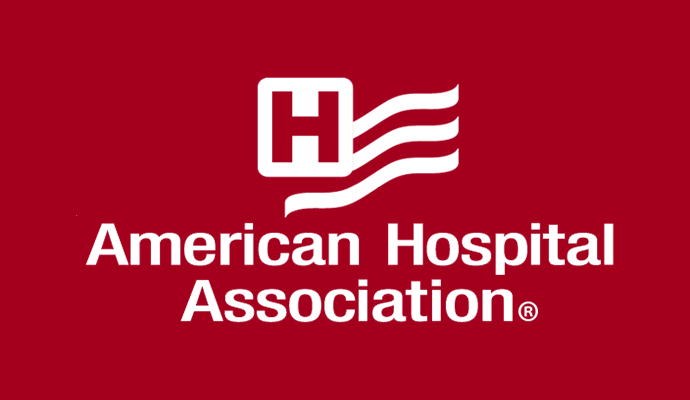AHA: High Hospital Costs Stem from Increased Patient Acuity
Higher patient acuity requires additional staff, more intensive treatments, and more expensive drugs, leading to higher hospital costs, AHA said.

Source: AHA Logo
- Rising patient acuity due to delayed healthcare during the COVID-19 pandemic has contributed to significant growth in hospital costs, according to a report from the American Hospital Association (AHA).
While COVID-19 has led to higher patient acuity, non-COVID-19 conditions have also resulted in sicker patients.
Between 2019 and 2021, the average length of stay for hospitalized patients increased by nearly 10 percent. Another measure of patient acuity, case mix index, increased by 7 percent in 2021.
For patients hospitalized for non-COVID-19 reasons, average length of stay and case mix index were 6 percent and 5 percent higher in 2021 than in 2019, respectively.
These increases were driven by patients missing elective procedures during the pandemic. Elective procedures tend to be medically necessary and, if delayed, can lead to severe illnesses and more intensive care in the future.
The report referenced data from a survey by the Primary Care Collaborative and the Larry A. Green Center, in which 37 percent of primary care physicians said their patients with chronic conditions were in worse health due to the pandemic. More than half reported seeing an increase in negative health burdens due to delayed or inaccessible care.
The case mix index for patients receiving hospital-based procedures increased substantially from 2019, the AHA report found. As of May 2022, case mix index was up 11.1 percent for patients receiving mastectomies, 15 percent for appendectomies, and 7 percent for hysterectomies.
The average length of stay for patients with certain cancers and other chronic illnesses was also high in 2021 compared to pre-pandemic times. For example, the average length of stay rose 89 percent for hospitalized patients with rheumatoid arthritis and 65 percent for patients with neuroblastoma and adrenal cancer.
Caring for sicker patients leads to higher hospital costs as it requires more staff, more intensive treatments, additional supplies and equipment, and steeper drug costs.
“Combined with rapidly rising economywide inflation and reimbursement shortfalls, these mounting costs are threatening the financial stability of hospitals around the country,” the report stated.
Hospitals continue to face workforce shortages, causing them to utilize contract labor to meet patient demand. An increase in contract labor utilization has contributed to rising labor expenses. According to June 2022 data from Kaufman Hall, hospital labor expenses have increased by more than 12 percent since 2021.
Patients with higher acuity also tend to require more expensive drug treatments, leading hospitals to experience significant growth in drug costs between 2019 and 2022. Between May and June 2022 alone, drug expenses rose 4.1 percent.
Supply costs, stemming from an increased need for surgical masks, ventilators, and equipment, rose 5 percent between May and June 2022.
Rising patient acuity has put additional strain on hospitals as COVID-19 case counts and hospitalizations climb.
As a result of ongoing financial challenges, AHA has asked Congress to relieve some of the burden hospitals are facing. First, AHA urged leaders to end Medicare payment cuts to hospitals, health systems, and other healthcare providers.
AHA has also asked Congress to extend or make permanent waivers that have improved patient care access and extend premium subsidies that have made healthcare coverage more affordable.
In addition, the trade association requested that Congress hold commercial health insurers accountable for improper business practices that create administrative burden for providers and take time away from patient care.
“Hospitals need additional federal support and resources to ensure their caregivers can continue doing what they do best – taking care of patients and advancing the health of their communities,” the report concluded.
